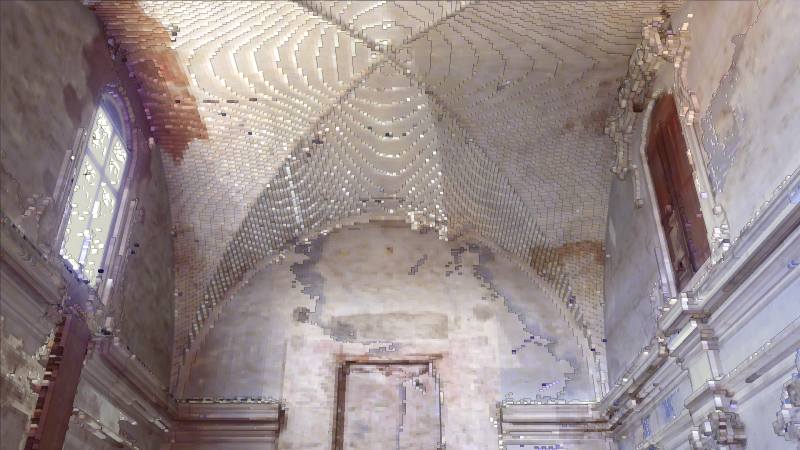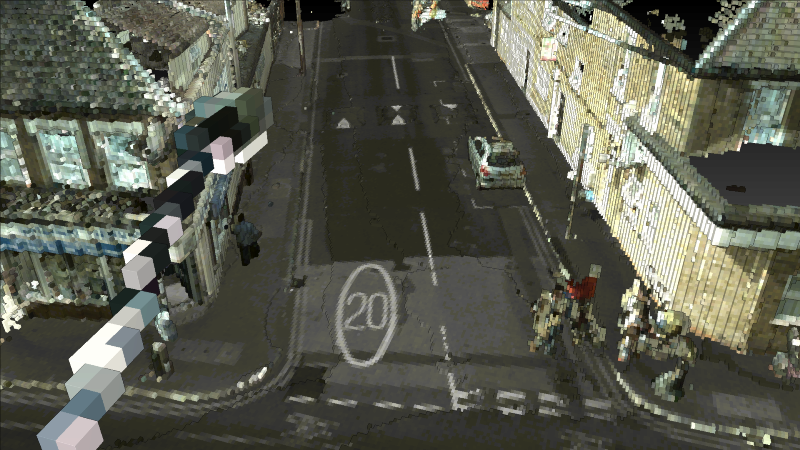Veesus Ltd releases innovative voxel technology that is set to transform the field of data processing

 Veesus, a leading provider of point cloud visualisation software and products, has recently announced the addition of a new exploratory dynamic voxel-based compression technology to its already very impressive list of offerings. This new technology promises to revolutionise the way we interact with point cloud data and could have far-reaching implications for a variety of industries.
Veesus, a leading provider of point cloud visualisation software and products, has recently announced the addition of a new exploratory dynamic voxel-based compression technology to its already very impressive list of offerings. This new technology promises to revolutionise the way we interact with point cloud data and could have far-reaching implications for a variety of industries.
With Veesus’ new exploratory dynamic voxel-based compression technology, users can now compress their point cloud data to such a degree that it can be sent via email. This is a significant development, as point cloud data is typically very large and can be difficult to transfer between users or organisations. However, with the new technology, users can quickly and easily compress their data, making it much easier to share and collaborate with others.

The technology works by compressing point cloud data in a way that allows users to explore and interact with it in real-time. This means that users can manipulate large amounts of data without experiencing lag or other performance issues, which could be particularly useful in fields such as construction, architecture, and urban planning.
One of the key benefits of Veesus’ new technology is its ability to compress point cloud data up to a staggering 4000x! This is achieved through a combination of voxel-based compression and dynamic loading and Veesus’ point cloud engine, which allows users to explore and interact with even the largest point cloud datasets without experiencing any lag or other performance issues. Additionally, the technology integrates seamlessly with Veesus’ other point cloud visualisation software and cloud storage platform, making it easy to incorporate into existing work-flows.
The ability to compress point cloud data to such a degree that it can be sent via email has significant implications for a variety of industries. For example, in the construction industry, architects and engineers can now easily share large point cloud datasets with contractors or subcontractors. This could lead to more efficient and collaborative work-flows, as well as reduced costs and increased productivity.
In the architecture industry, the ability to compress and share point cloud data could be particularly useful for building information modelling (BIM) work-flows. BIM is a process that involves creating digital representations of buildings and their components, and point cloud data is often an important component of this process. With Veesus’ new technology, architects and designers can easily share large point cloud datasets with other members of their team, allowing for more efficient design processes.

In the urban planning industry, the ability to compress and share point cloud data could be useful for a variety of applications, including assessing the impact of proposed developments on existing infrastructure. With Veesus’ new technology, planners can quickly and easily share large point cloud datasets with other members of their team, allowing for more efficient and collaborative planning processes.
Overall, Veesus’ new exploratory dynamic voxel-based compression technology represents a significant step forward for the point cloud visualisation industry. With its ability to compress large amounts of data, it has the potential to revolutionise the way we interact with point cloud data and could have far-reaching implications for a variety of industries. Whether you’re in construction, architecture, or urban planning, this new technology is definitely something to keep an eye on in the coming months.

